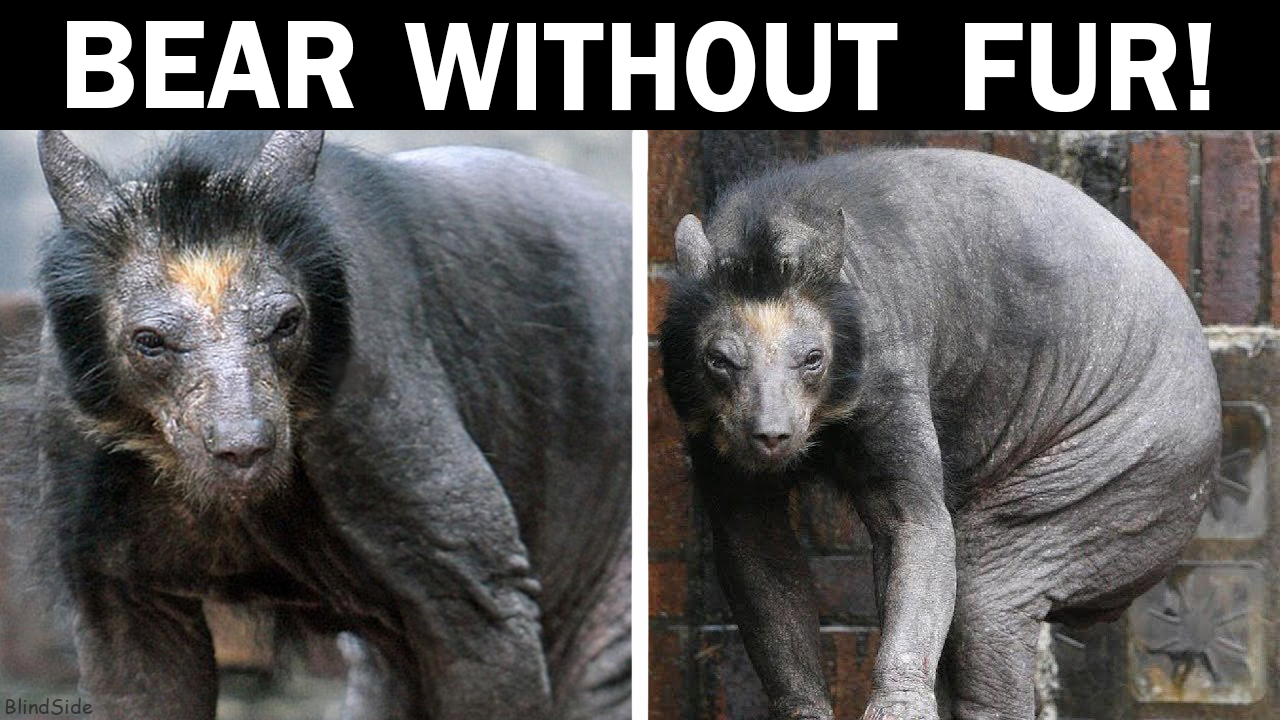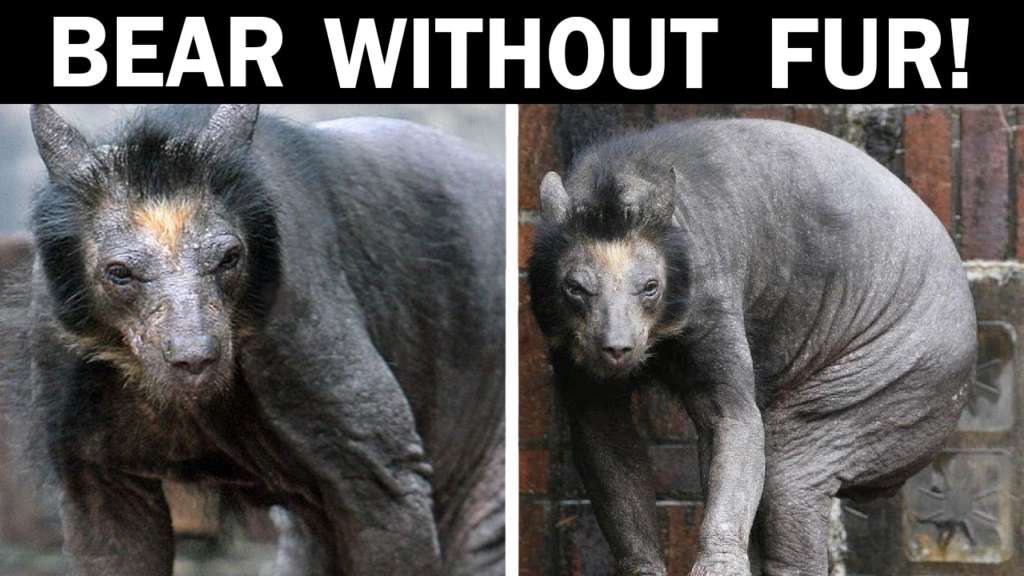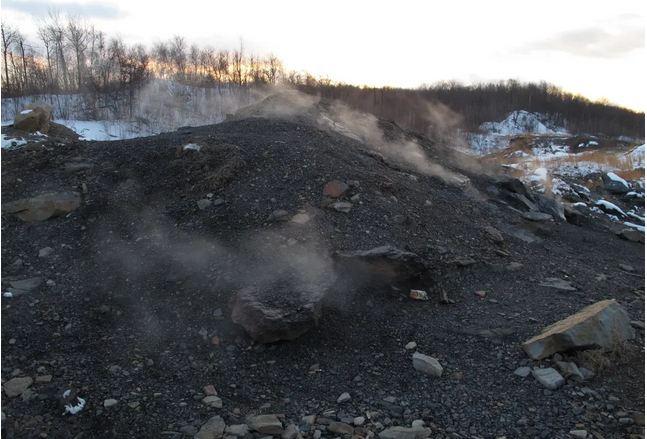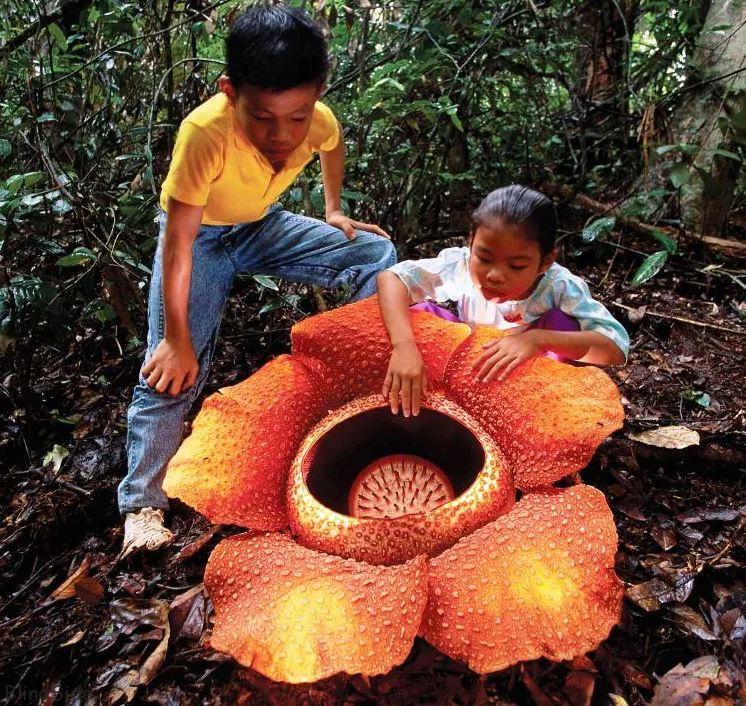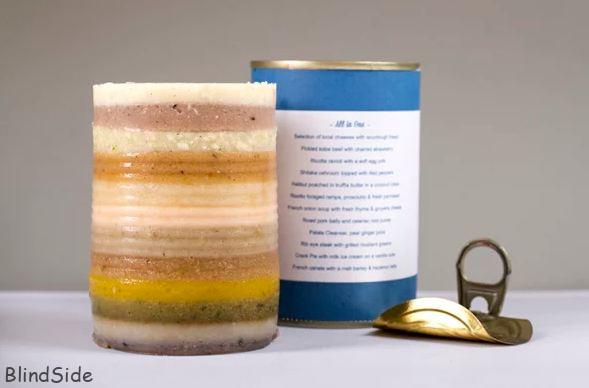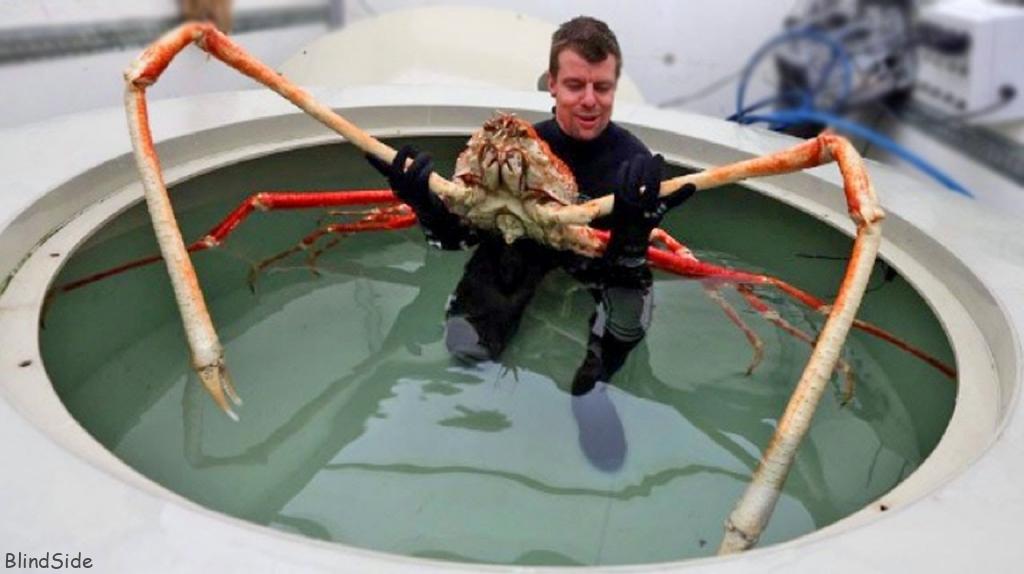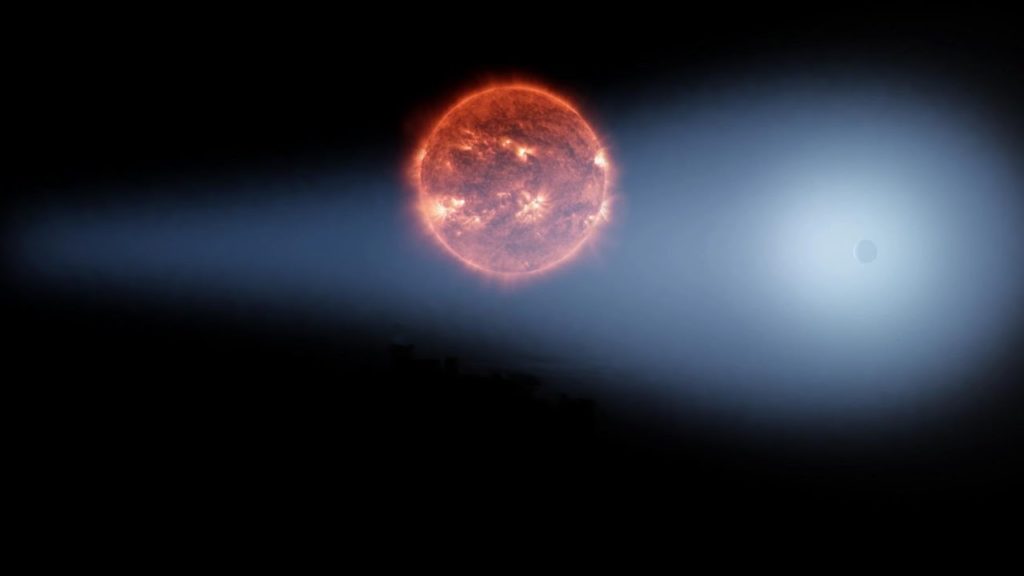We are here on the Blind Side, have you ever been told something that you think couldn’t possibly be true, something that sounds more at home in a fairytale than real life? What about something you thought was real, but actually isn’t? From the bear who has lost her fur coat, to the insurance policy for extra-terrestrial events, here are 15 Strangest Things You Didn’t Know 5 Minutes Ago.
15.Bear Without Fur
Creating an enclosure that imitates a bears natural habitat, has proven difficult for zoos in both Germany and Europe, resulting in sudden and complete hair loss for a number of the enclosures, normally furry, occupants.
Heading into the cooler months without a winter coat, is certain to be unpleasant for three female bears at a zoo in Leipzig, Germany.
The speckled bears, Dolores, Bianca and Lolita, are all in various states of hairlessness, with one having lost all her body hair, with just a few tufts left around the head.
Although some experts believe the hair loss is due to a genetic defect, others say it is more likely to have stemmed from their living environment.
Their skin is inflamed, and they have all developed nasty rashes, that are now clearly visible without their fluffy dark brown fur.
Tropical bears, whose native habitat is South America, experts suggest their plight could have been caused through the sudden change in climate and diet.
Having come from the Andean mountains of Ecuador, Peru and northern Bolivia, the bears now living in both Germany and Europe are experiencing similar issues, with keepers having to apply ointment daily to soothe their skin.
Specialists say that as mountain bears, they have a seasonal pattern that is influenced by climate, behavior and food, and this has not been accurately replicated in their new home.
Known to be an issue for quite some time, zoos have been looking into solutions, with the director of the International Bear Foundation, Gerard Baars saying he had never seen a case like it in all his years of dealing with bears.
The bears, who resemble over-sized wrinkly cats, are however, drawing in the crowds, with many wanting to see them without their woolly coats.
It can only be hoped that the zoo turns up the heat in their enclosure, or it could be a long, cold winter.
14. Alien Abduction Insurance
Sounding a lot like an informercial for something you clearly don’t need, 100,000 American citizens have taken out an Alien Abduction insurance policy. For just US$19.99 the policy holder is entitled to US$10 million if they can prove they were abducted by aliens!
Seems a little far-fetched doesn’t it? Well, believe it or not, this insurance forms part of a legitimate business, that was established in Saint Lawrence, Altamonte Springs, Florida in 1987. UFO Abduction Insurance Company has even paid claims. Details of the claims are sketchy, but we have to imagine that the abductees made it safely back to earth to fill out the paperwork.
The company aren’t alone with their unique business idea, with Lloyds of London also having sold approximately 20,000 similar policies.
Common coverage options include; medical and psychiatric care in the event of a physical abduction by a UFO, cash settlement payouts for alien pregnancy and/or death caused by aliens.
Sightings of extra-terrestrial life in the USA are in the thousands, however few remain unexplained, and even fewer have been confirmed as legitimate. So, why the need for insurance?
Perhaps Alien Abduction Insurance gives those, worried about the impact an alien abduction might have on their life, a sense that they’re covered for all eventualities.
Who really knows?
13. Rum scented space cloud
Located just under four hundred light years from the center of the Milky Way Galaxy, there is a dust cloud made up of ethyl formate, the ingredient that gives rum its aroma. Astronomers have discovered that the space cloud, Sagittarius B2, smells like rum and may taste like raspberries!
Using an IRAM telescope in Spain, the electromagnetic radiation emitted by the cloud was analyzed and found to include enough ethyl alcohol to fill 400 trillion, trillion pints of beer.
That’s crazy! In fact, so crazy, that if every person on earth were to drink 300,000 pints of beer every day for one billion years, that would be the amount of ethyl alcohol Sagittarius B2 contains.
Obviously lethal doses for a human, but perhaps only a little intoxicating for the colossal cloud of dust, thought to span across 150 light years. It’s little wonder the astronauts chose to test it from a distance!
What they are now trying to determine about this giant cloud that smells a bit like rum and possibly tastes like raspberries, is how the tremendous cloud of alcohol came about in the first place.
Maybe our extra-terrestrial friends spilled it after a few too many drinks.
12. Abandoned town on fire
Completely abandoned and condemned by the Commonwealth of Pennsylvania in 1992, the town of Centralia has been on fire for more than 50 years.
The fire, deliberately lit to burn out a landfill in 1962, sparked a raging underground inferno.
Little did the fire lighter know that the landfill had once been an old strip-mine pit and was connected to a series of coal-mine tunnels, creating a recipe for disaster!
Throughout the years, sulfurous gases have occasionally billowed out through cracks in the road, including Highway 61, with signs warning visitors of the dangers that lurk within the township.
Once home to more than 1,000 people, it’s hard to imagine anyone inhabiting the place anytime soon, with the fire, fueled by copious amounts of coal, expected to burn for at least another 250 years.
11. A Bubblegum Pink Lake
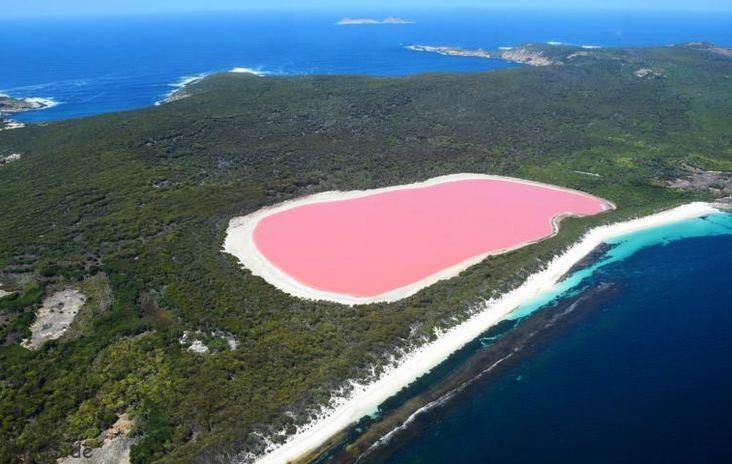
Imagine if you will, hooking the boat on and heading off for a day out on the lake. Once there, you discover said lake isn’t blue – it’s pink!
Yes, that’s right, pink!
Why pink you may ask?
Well, we all know Mother Nature is known for mixing things up on occasion, and with this little stroke of genius, she sure has left people wondering. Located in Australia, famous for some pretty bizarre animals and unusual places, their pink lakes truly defy logic.
For many years, scientists have been at a loss to explain their color, described as somewhere between ‘flamingo’ and ‘fairy floss’, however recent research is changing that.
Lakes are universally a pale blue color, but Australia’s Lake Hillier in the remote south-west of Australia, and several others dotted around Western Australia, are pink. Lake Hillier, however, is well known for being the most bubblegum-colored of them all. It is also the most frequently visited.
After much research, scientists have determined that a micro algae, containing a reddish pigment, is responsible for the color change. The pigment is said to thrive in salty lakes.
Once used to mine salt, Lake Hillier is 600 meters long and 250 meters wide and is surrounded by gum trees and sand dunes. Both act as protection from the Southern Ocean, effectively shielding the pink water from contamination.
Now a tourist attraction, a one hour 40-minute round trip to Lake Hillier by air will set you back $370 Australian. Swimming is off limits; however, you can explore the surrounding islands on a diving and snorkeling experience with one of the local tour operators.
10. Human-Sized Beavers
Human-size beavers once roamed the lakes and wetlands of North America. Said to grow to about 2 meters high and weigh up to 100 kilograms, the super-sized version is thought to have died out through a combination of climate change and human impact.
Fossilized remains of the giant rodents were found in sites from Florida to Alaska and Yukon and show that the large-bodied ice age animal had two crucial differences to the beavers of today.
In the place of the paddle-shaped tail of the modern beaver, was a long skinny tail, like that of a muskrat, and its teeth were bulkier and curved, instead of sharp and chisel-like.
The giant beaver’s sudden disappearance some 10,000 years ago coincides with that of many other large animals of that era, including the woolly mammoth.
Until now, scientists were at a loss as to why these giant animals had died, but now believe they simply weren’t built to survive the climatic conditions at the time.
As the weather became increasingly warm and dry and wetland habitats began to dry up, the modern beaver, for example, could create a suitable habitat with the help of its sharp teeth. The giant beaver unfortunately could not.
9. A Rainbow Mountain Range
No, this colorful formation isn’t part of a scene from ‘Joseph and his technicolor dream coat’, this is a mountain range in China. Set within the Zhangye Danixa Lanform Geological Park, the Rainbow Mountains are a geological wonder of the world, made famous by their vivid colors that mimic a rainbow painted across the landscape.
Located in the Gansu province in China’s northwest, the geological park covers 200 square miles, and in 2005, was voted as one of the most beautiful Danxia landform areas in China. The site, named a UNESCO World Heritage Site in 2009 is also the destination for many Chinese and international tourists.
Cretaceous sand and silt stones were deposited in China prior to the formation of the Himalayan Mountains. These stones and other trace minerals then provided the key ingredients to create the Rainbow Mountains that are visible today.
Originally a layered horizontal and flat structure, the area where the Rainbow Mountains reside today, was disrupted by the Indian Plate colliding into the Eurasian Plate approximately 55 million years ago. This process caused the flat sandstones to fold into the mountains and expose the previously hidden sedimentary rocks below.
Weathering and erosion removed the overlying layers of the rocks and exposed underlying formations with different mineralogy and chemistry, resulting in the striking color variations that characterize the Rainbow Mountains.
8. A 20-Pound Flower
Found in the rain forests of Indonesia, this rare flower is considered the world’s largest, weighing in at a hefty 20 pound.
The Rafflesia, doesn’t have leaves, roots, or a stem, but it does have a unique odor, one you’re not likely to enjoy.
The crimson-colored monstrosity boasts enormous ‘petal-like’ lobes and a spiky center, and although impressive to view, you best hold your nose, as it emits a disgusting aroma like that of rotting meat or poop!
Along with its ghastly smell, the flower is difficult to miss, as it grows to be three feet wide and is effectively a parasite, attaching itself to a host plant to obtain food and water.
An impressive flower, colored blood-red, it was first discovered in 1818 in the dense jungles of Sumatra and is considered one of the rarest plants on the planet!
7. Full-Time Mattress Jumpers

Let’s face it. This sounds fun. Remember as a child jumping on the bed, being scolded by your parents, only to do it again when their backs were turned? This is the stuff dreams are made of, surely?
If you don’t want to risk buying a mattress that doesn’t fit the bill, how about employing the services of a mattress jumper? Yes, there is such a thing, however, it’s not quite as much fun as you remember. In fact, according to one professional mattress jumper, it’s pretty hard work.
As part of their mattress manufacturing process, some companies are hiring the services of professional mattress jumpers, to ensure a bad mattress doesn’t ruin their customers chances of a good night’s sleep.
Said to be the final step in the hand-made mattress making process, the jumper helps to compress the interior cotton batting.
Mattress jumpers take their role very seriously, and apparently there is a right way and a wrong way to do it.
Who knew?
Technique is key, with the precise number of bounces, roughly 100 per side, needed for ideal compression.
With the lyrics of the classic nursery song ‘Five Little Monkeys’ dancing over and over in your head, you have to wonder how many jumpers end up bumping their head?
But apparently, it’s not a game, and Mum won’t come in anytime soon to tell you off for jumping on the bed.
Good to know.
6. 12-Course Meal in Can
Looking for all the world like a dinner option for the family pet, this unappetizing meal idea is no doubt collecting dust in pantries right across the globe.
Created as a quick way to devour a 12-course meal, the jelly-like all-in-one concoction is layered to include a cheese with sourdough bread; pickled Kobe beef with charred strawberry; ricotta ravioli with a soft egg yolk; shiitake mushroom topped with filled peppers; halibut poached in truffle butter in a coconut crepe; risotto foraged ramps, prosciutto, and fresh parmesan; French onion soup with fresh thyme and gruyere cheese; roast pork belly and celeriac root puree; pear ginger juice as a palate cleanser; ribeye steak with grilled mustard greens; crack pie with milk ice cream on a vanilla tuile; and French canele with a malt barley and hazelnut latte.
No doubt delicious separately, together the result would be a sensory overload for the taste buds, and not in a good way.
Even the description of how it is made, is enough to send a person looking for the closest bathroom, with each course pureed in a blender with gelatin! Yuck!.
Gelatin is for dessert, not a 12-course meal! And certainly not in a can!
5. Spider Crabs 13-Foot-Long Legs
Combine your fear of spiders with your fear of ocean-dwelling critters, and you have a recipe for a horror movie, or simply one of the oceans lesser known inhabitants, the Japanese spider crab.
With 13-foot legs, a body spanning 38 centimeters across, and weighing in at a hefty 40 pounds, visions of this long-legged arachnid are more than a little unsettling.
The largest crab known to exist; the spider crab is in a class of its own. Not only can they outlive humans, they are also carnivorous and, whilst fascinating to watch, these interesting undersea giants can be found living at around 1000 feet under water. They do, however, like to venture into shallower waters, perhaps a little something to consider, next time you’re out swimming.
With a lifespan of up to 100 years, the spider crab is said to get larger as it gets older, a frightening fact, considering the oldest ever caught was 40 and it was huge!
Although large, they are not considered dangerous to humans. In fact, although carnivores, they aren’t known for their hunting abilities, preferring just to eat algae, kelp, mollusks and the dead bodies of any creatures that float past.
Nothing much phases these guys either, as they can happily exist for many years with missing limbs, re-growing fresh ones if required.
Considered a delicacy, this is good news for those who enjoy a crab leg or two!
4. Ice Planet on Fire
Considered one of very few planets that puts science fiction to shame, Gliese 436b, the faraway exoplanet, is a bit of a contradiction in terms. Although it is mostly made up of ice, the planet looks to be on fire.
With a surface reaching an eye watering heat of 822 degrees, you would think the landscape too would be just as hot, but you’d be wrong. Due to an immense gravitational pull, Gliese 436b’s landscape, stays frozen solid. The force exerted by the planet’s core is said to keep the ice much denser than that on earth, compressing water vapor that would have normally evaporated.
Nicknamed ‘the Planet of Burning Ice’, Gliese 436b is one of the smallest planets that exist outside the solar system and is said to be home to Ice VII, a cubic, crystalline form of ice that has been manufactured in laboratories here on earth.
3. An Island Full of Adoptable Dogs
Missing your beloved pup back home whilst holidaying on a tropical island? Not to worry. For those holidaying in the Grace Bay area of Providenciales, you’re in luck.
A volunteer-run animal shelter called Potcake Place, is home to the island’s stray dogs.
Created to ensure they get a chance at a better life, the shelter has dogs looking for a forever home, and others that can be borrowed as companions whilst you’re on holiday.
A tropical paradise with glistening water and bright sandy beaches, visitors are often unaware of the increasing homeless dog population.
Called potcakes, after the rice-and-pea pot dish locals traditionally feed the stray dogs, they come in all shapes, sizes and colors, all adorable and all looking for their forever home.
Borrowing a dog for the day is also encouraged, as they are all in need of socialization, and if the holiday maker happens to fall in love with their four-legged companion, that’s even better.
A small donation to help keep the shelter running, is requested upon adoption and stringent checks of prospective owners are undertaken before the dog leaves the island.
Approximately 500 puppies are adopted each year through Potcake Place.
Puppies and paradise, the perfect combination.
2. Butterflies Eat Poison
The fact they can eat poison and live to tell the tale, is considered a caterpillar’s best defense mechanism, and it’s hard to argue with the facts. The caterpillar for the monarch butterfly is known to only eat milkweed, a poisonous plant. Instead of digesting it, however, they store it to ward off unwanted prey.
Scientists have known this fact for some time and introduced these mutations to fruit flies, gaining the same results.
Insects have been eating plants for 400 million years and in that time have developed several botanical defenses and ultimately resistances. One such resistance is that of the caterpillar to milkweed. The toxins in milk weed are the same as those African hunters use on their arrows. They can mess up the nervous system and have even featured in Agatha Christie murder mysteries. They’re clearly not to be messed with!
So how does a tiny caterpillar survive to tell the tale?
After laying their eggs on the plant and eating a ton of it, the monarch caterpillar enters its chrysalis form. After transforming into a butterfly, the previously eaten toxins form on the wings, making them poisonous.
When birds try to eat butterflies, they effectively vomit them back up.
Disgusting, but true.
1. A Machine That “Prints” Brick Roads
You’ve no doubt heard the Elton John tune ‘goodbye yellow brick road’, but here we say hello, as block paving becomes the new alternative to asphalt.
Hardly strange, we know, but the method of creating the blocks may be of interest.
Considered a manually intensive process, block roads are more aesthetically pleasing than their asphalt alternative and quite common on roads where traffic is relatively slow.
With hours and hours of work needed to build one, Dutch company Vanku BV sought an easier alternative.
Enter, the Tiger Stone brick laying machine.
Workers are still required to feed the bricks into the machine; however, the result is both more efficient and more effective, with one team of two to three men, able to lay approximately 300 meters of brick road a day.
The machine is also capable of laying various patterns, is simple to operate and driven by electricity, reducing noise levels. A new eco model can operate for a full week on just one charge.
The machine can create brick roads up to six meters wide and reduce a job that would have taken weeks, to just a couple of days.
There are a wide variety of peculiar things happening in our world today, but nothing quite so odd as the insurance for alien abduction. For one, how could you prove you had been abducted by aliens? And two, who gets the cash if you never return to earth? A waste of money? We think so. Also, check out our other cool stuff showing up on screen right now. See you next time!
